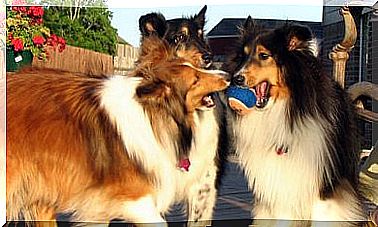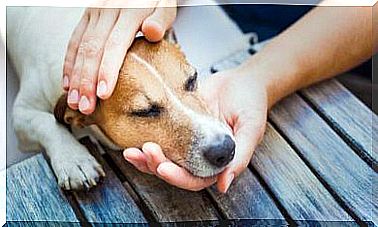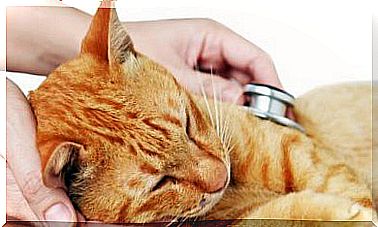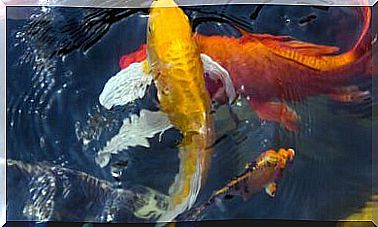Thrombophilia In Dogs: What Is It And What Is It Caused By?
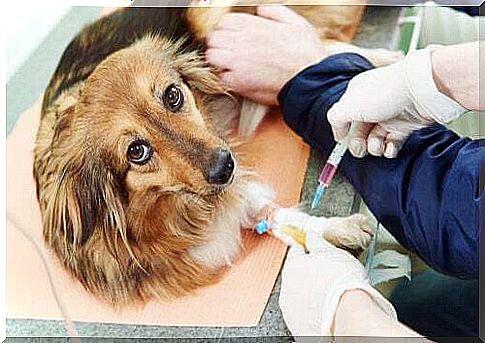
Blood clotting can be altered in several ways: sometimes by excess, others by defect. Hypercoagulability disorders, for example, are caused by an excess. For several reasons this system works more than normal and there is a greater tendency for blood clots to appear, with the risks that this entails. This is how thrombophilia develops in dogs.
Diseases that predispose to hypercoagulability are by no means rare. This complication can cause further pathologies, worsening their prognosis. Let’s find out what thrombophilia in dogs consists of.
General information on thrombophilia
Thrombophilia, also called hypercoagulability or prothrombotic state, is a blood clotting abnormality that increases the risk of thrombosis. It can be congenital or acquired. It occurs through the formation of clots inside a blood vessel, blocking it and preventing blood circulation.
This creates a thrombus that can fragment into emboli and travel through the bloodstream, obstructing circulation.
For hypercoagulability to occur, there must be a disturbance of haemostasis, that is, the body’s ability to stop bleeding.
Risk factors
There are three main risk factors that can cause thrombophilia in dogs, known medically as the Virchow triad:
- Hypercoagulability.
- Hemodynamic changes, i.e. changes in blood flow (for example if it is slower).
- Injury or dysfunction of the components of the coagulation system. The latter is what is truly known as hypercoagulability and can be caused, in turn, if the platelets are altered and show excess aggregation; if there is an alteration of the coagulation factors; finally if there is a lack of natural anticoagulants.
When factors responsible for clearing clots don’t work properly, blood clots are more likely to form.
The coagulation system of animals is regulated by three main mechanisms:
- Antithrombin, as its name suggests, works by preventing the formation of blood clots.
- Protein C, a natural blood thinner.
- The fibrinolytic system, responsible for breaking down clots.
Under normal circumstances, these mechanisms work to prevent thrombus formation and to limit and localize clot formation. If one or more of these mechanisms fail, thromboembolism occurs.
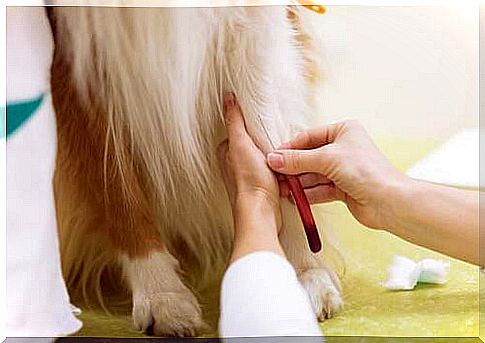
Causes of Thrombophilia in Dogs
Next, we will point out some of the more common causes of thrombophilia in dogs.
Immune-mediated hemolytic anemia
This disease is one of the major causes of death in dogs because it causes the appearance of thromboembolism. It appears more often in older animals and there appears to be a greater predisposition in females.
Its appearance is associated with the consumption of certain chemicals or drugs, but also with the presence of some bacteria and viruses, tumors, lupus, etc.
Diseases of the liver
The liver plays a fundamental role in haemostasis because it deals with the synthesis and elimination of most of the coagulation factors. Dogs suffering from acute liver disease show prolongations of PT (prothrombin time) and aPTT (activated partial thromboplastin time).
In other words, they are considered at risk patients with a tendency to bleed. Recent studies suggest that hypercoagulable states may also appear.
Cushing’s disease
It is a disease of the endocrine system, characterized by an excessive functioning of the cortex of the adrenal glands.
There are many causes, but in dogs they are usually due to a tumor of the pituitary gland or the glands themselves. Sometimes it also appears due to the excessive administration of corticosteroid treatments.
Cushing’s disease is one of the most serious complications of thrombophilia. For example, when hypertension occurs, blood vessels are damaged, antithrombin is reduced, clotting factors are increased, etc. That is, everything contributes to the appearance of thrombi.
Other pathologies that occur with thrombophilia: septicemia
Bleeding disorders in cases of sepsis and severe systemic inflammation are very common. For example, a clotting factor tends to become hyperactive in these cases.
The activation of body anticoagulants, such as protein C, is also reduced. When the immune system is activated, platelet aggregation, sometimes in excess, is activated. That is, in the case of septicemia, the likelihood of a hypercoagulable state is high.

Tumors
The incidence of thrombophilia when a dog has cancer is very high and appears to be even higher when treated with chemotherapy. This is why anticoagulant protocols are established in these types of patients.
The hypercoagulable state in cancer involves all factors of the Virchow triad. Cancer cells themselves can also be prothrombotic.
Can these ailments be prevented?
In addition to treating these diseases, there are a number of guidelines that help prevent the onset of thrombophilia. Pets need to have healthy lifestyle habits and follow them on a daily basis.
It is important that they have an active lifestyle, with long daily walks. If there is a congenital predisposition, it is essential to consult your veterinarian about the possibility of adopting permanent treatment.



